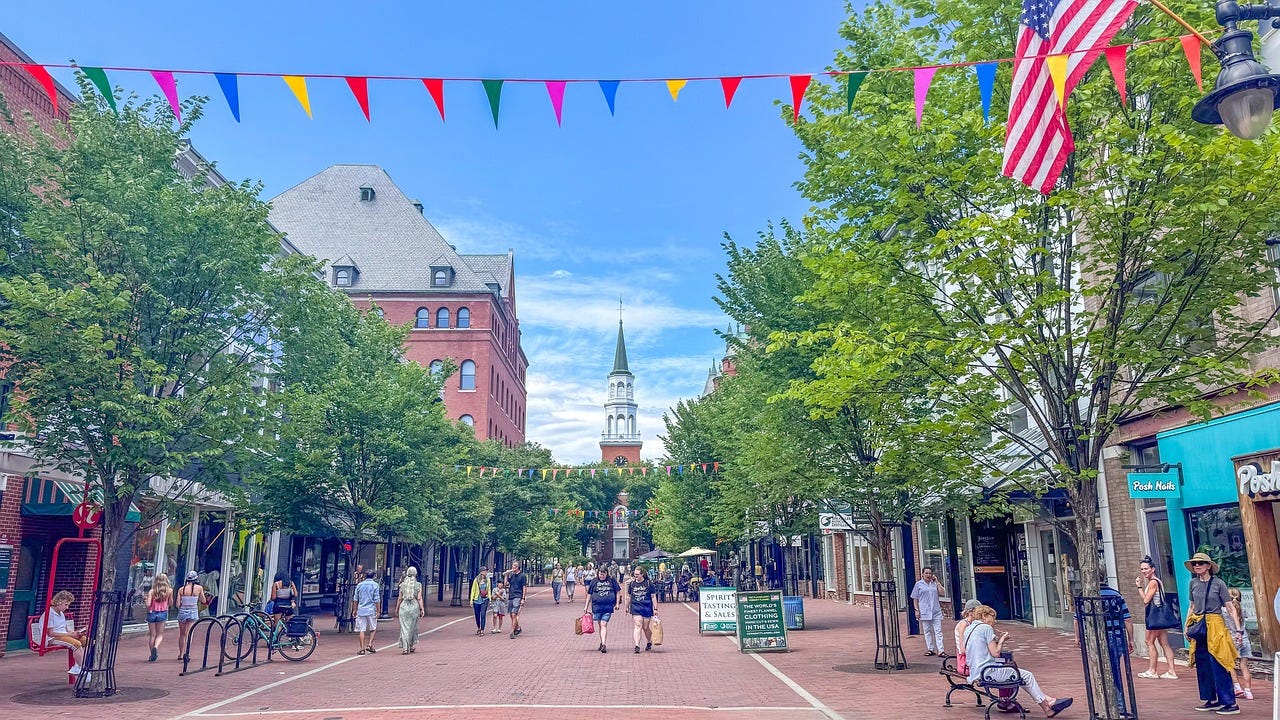Boston Globe Questions Whether Burlington Has Lost Its Cool Vibe
The article sees a city at a crossroads, which is accurate—homelessness, crime, and budget woes are undeniable.
he Boston Globe’s June 9, 2025, article on Burlington’s challenges has sparked debate in the Queen City. Kevin Cullen’s piece portrays a city grappling with crime and homelessness, threatening its progressive, hip identity. For Burlington residents, these issues are familiar, but the Globe’s framing feels like an outsider’s perspective on a deeply known place.
The Globe accurately captures Burlington’s major challenges. Homelessness is starkly visible downtown, particularly in City Hall Park and along Church Street, where addiction and mental health struggles are evident. WCAX reported a tripling of homeless individuals in 2023, and VTDigger noted Vermont’s fourth-highest homelessness rate nationally in 2024. Crime has surged, with the Vermont Daily Chronicle reporting a 23% increase in early 2024, exacerbated by a police force diminished after a 30% budget cut in 2020 following George Floyd’s murder. City-Data.com shows officer numbers dropped from 99 in 2021 to 70 by 2023. These realities, echoed in Seven Days and the Burlington Free Press, are well-documented in the Globe’s account.
Economic pressures are also correctly highlighted. Mayor Emma Mulvaney-Stanak, elected in March 2024 as Burlington’s first woman and openly LGBTQ+ mayor, inherited a $14 million budget deficit, leading to 18 city job cuts to close an $8 million gap, per Seven Days. Controversy arose when the Free Press reported a raise for her wife, the water resource director. President Trump’s anti-Canada rhetoric, noted by Vermont Public as causing tourist cancellations due to tariff fears, threatens summer revenue, as does downtown construction’s pervasive dust, a point the Globe aptly includes.
However, the Globe’s lens seems aimed at a Boston audience. Labeling Burlington’s vibe “hip” and “cool” oversimplifies a city defined by resilience, not just aesthetics.
The article mentions cannabis shops and occasional nude strollers but skims the deeper ethos tied to its Bernie Sanders legacy. The city council’s debates on the war in Gaza, noted by the Globe, reflect a globally engaged community, yet the article doesn’t explore why this matters—a commitment to justice rooted in history. The Vermont Italian Cultural Association’s passeggiata strolls on Church Street are praised but framed as quaint, missing their defiant reclamation of public space amid a downtown called “zombie land” by the Globe.
The Globe’s portrayal of Mulvaney-Stanak is balanced but lacks depth. Her pragmatic moves—retaining Police Chief Jon Murad, then appointing Shawn Burke, and allocating $10,000 to relocate Food Not Cops to appease business owners—navigate a clash between compassion and commerce, as the Free Press has covered. The Globe calls her pragmatic, but Burlington’s polarized climate makes her role more akin to tightrope-walking, a nuance less apparent to outsiders.
The Globe overlooks the intensity of Burlington’s resolve. The closure of Merrill’s Roxy Cinemas, reported by the Free Press in November 2024, and Nectar’s summer shutdown due to Main Street construction, per Seven Days, are blows. Yet, support for ICE detainees like Rümeysa Öztürk and Mohsen Mahdawi, with local judges challenging Trump’s policies, galvanizes the community, a point the Globe underplays. The passeggiata walks signify more than leisure—a bold claim on Burlington’s streets.
The Globe questions whether Burlington can stay cool, but that framing misses the mark. The city isn’t chasing trends; it’s fighting for safety, inclusivity, and authenticity.
The article sees a city at a crossroads, which is accurate—homelessness, crime, and budget woes are undeniable. But Burlington’s essence shines in its global debates, justice marches, and Church Street strolls, crafting a future true to its roots. The Globe’s snapshot is sharp but static; Burlington is already writing the next chapter, dust and all.


